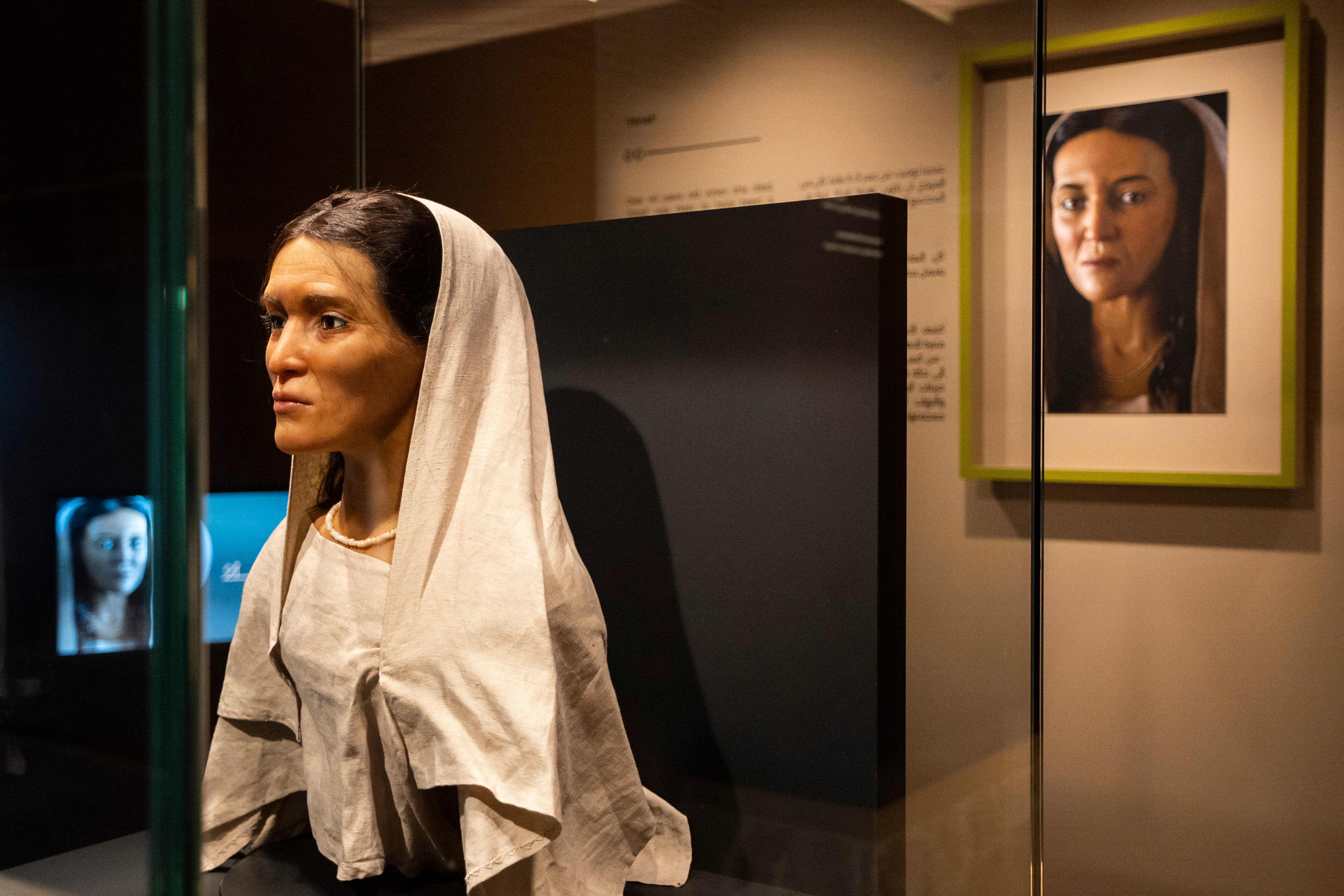Reconstruction of Nabataean woman to help understanding of ancient civilisation
The remains of the woman, known as Hinat, were found in a tomb on the outskirts of the ancient city of Hegra.

Your support helps us to tell the story
This election is still a dead heat, according to most polls. In a fight with such wafer-thin margins, we need reporters on the ground talking to the people Trump and Harris are courting. Your support allows us to keep sending journalists to the story.
The Independent is trusted by 27 million Americans from across the entire political spectrum every month. Unlike many other quality news outlets, we choose not to lock you out of our reporting and analysis with paywalls. But quality journalism must still be paid for.
Help us keep bring these critical stories to light. Your support makes all the difference.
What is believed to be the first known reconstruction of an ancient Nabataean woman’s face will be displayed in Saudi Arabia after years of work from archaeologists, anthropologists and academics.
The remains of the woman, known as Hinat, were found in a tomb on the outskirts of the ancient city of Hegra – she was thought to have died around the first century BC.
Archaeologists, anthropologists, forensic reconstruction experts and a 3D sculptor were all involved in the process – after a 3D reconstruction was completed and validated in July 2020, work began on making molds to produce a silicon bust of her face.
The reconstruction will be displayed at the Hegra Welcome Centre in AlUla from February 6.
Dr Christopher A Tuttle, a Nabataean specialist, said it is “the first chance we have to really envision what these people looked like”.
He added: “One of the problems in Nabataean archaeology and the study of the people is we lack images of them.
“They’re not portrayed very often in their own art, and for many decades of people working at Nabataean archaeological sites, we didn’t have very many human remains.”
Dr Helen McGauran, project lead for the reconstruction, said: “They’re still a fairly mysterious civilisation to a lot of people.
“I hope that this project will enable people to engage with the faces, the characters, the story of the Nabataeans in a much deeper way than perhaps has previously been realised.”
The Nabataeans were a group thought to be from central Arabia who became wealthy as the result of trade.
Their civilisation was said to have been a diverse one, while they carved “fabulously elaborate tombs into the sandstone cliffs that surround Hegra” according to National Geographic.
Subscribe to Independent Premium to bookmark this article
Want to bookmark your favourite articles and stories to read or reference later? Start your Independent Premium subscription today.